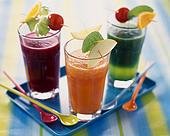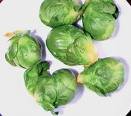
When choosing a juicer to buy there are a number of important questions you should ask yourself:
What ingredients will I want to juice? Can the juicer juice these ingredients?
How easy is the juicer to use?
How easy is it to clean the juicer?
How much juice does the juicer extract, i.e. how efficient is the juicer?
How many nutrients does the juicer extract?
How long will the motor / parts last?
How much do I want to spend?
With these points in mind I have outlined the different types of juicer available and point out their strengths and weaknesses:
Citrus Juicers
Citrus Juicers only juice citrus fruit - oranges, grapefruit, limes and lemons. They work by the half fruit being pressed down onto a spinning cone that reams the fruit. On some models the user presses the half fruit onto the reaming cone by hand, on other 'citrus press' models the 'lid' of the machine is pulled down onto the half fruit to press the fruit onto the reaming cone.
They give a better juice yield from citrus fruit than other types of juicer. They are also very quick to use as the citrus fruit does not need peeling, just chopping in half. They produce good quality juice.
Many people use a citrus juicer as well as a masticating / twin gear juicer so they can enjoy rapidly made citrus juices as well as vegetable and fruit juices.
Centrifugal Juicers
Centrifugal juicers work by feeding the chopped up fruit and vegetables through a chute onto a spinning basket that grates / chops the fruit / vegetable when it comes into contact with the baskets grating base. This grating process releases juice from the plant cells. The spinning action of the basket creates a centrifugal force and the pulp is collects against the basket walls. The juice is also forced to the walls of the basket by the centrifugal force but it passes through the tiny holes in the basket walls and out of the juice ejection spout of the juicer.
Advantages:
Quick juice preparation time as produce can be fed into the juicer quickly.
Relatively large feeding chamber when compared to masticating and twin gear juicers so fruit and veg doesn’t have to be chopped up as much
Convenient way to get juicing
Much cheaper than masticating and twin gear machines
Disadvantages :
Rapid speed means heat and air introduced into juice – this reduces the shelf life of the juice.
Not as efficient at extracting juice and nutrients as masticating and twin gear juicers. Juice can be frothy compared to other methods of juice extraction.
Citrus fruit must be peeled
Noisy – the high speeds required to generate the centrifugal force and eject the pulp mean the motor noise is the loudest of all juicer types.
Not capable of juicing wheatgrass or leafy greens
Masticating Juicers
These juicers work by cutting and ‘chewing’ the produce. They expel the pulp at the end of the juicer and so allow for continuous juicing. They fall between centrifugal juicers and twin gear juicers in their health benefits / convenience.
Twin Gear Juicers
For those looking to gain the best health benefits from juicing we recommend twin gear juicers. These work by crushing and pressing the produce to break down the produce fibres and release more juice and nutrients. Some models also come with bioceramic materials built into their design which are believed to extract more nutrients and extend the shelf life of the juice. This means that juice can be stored in a sealed container in the fridge and be consumed the next day.
Twin Gear Juicers are capable of juicing almost any type of produce including wheatgrass and leafy greens and so enable the user to benefit from the widest range of nutrients possible from their juicer.
Advantages
Excellent juice quality, both in taste and nutrient content
Excellent juice yield from your ingredients meaning you will save money in the long run
You can use your juicer for some other food processing functions
Juice has a much longer shelf life that centrifugal / masticating juicers
Excellent results from wheatgrass and leafy greens
Disadvantages
Slowest to use due to smaller feeding chamber, slower feeding time and slightly longer cleaning.
Not very efficient at juicing soft fruits, this can cause clogging. This is why people with a twin gear juicer often purchase a separate citrus juicer for making breakfast citrus juices.
 Ulcers are found in the digestive tract and can cause severe pain. An ulcer is an open sore that is found in the lining of the digestive tract. Cabbage juice has been used for many years to heal ulcers.
Ulcers are found in the digestive tract and can cause severe pain. An ulcer is an open sore that is found in the lining of the digestive tract. Cabbage juice has been used for many years to heal ulcers.










